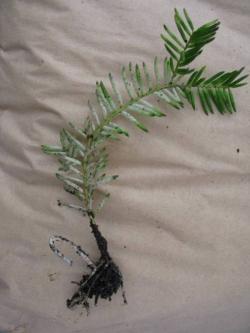 Asset Publisher
Asset Publisher
Sale conditions
Sale conditions of wood are specified by the regulation of Director – General of the Sate Forests.
Within the framework of the individual sale , the foresters try to meet the fast growing demand, because more and more people use wood in order to heat their houses. Contrary to general opinion, these are not only village people, even though they prevail among recipients. The growth of firewood demand is the result of occurrence of new housing estates built in the suburbs of large agglomerations, where houses are usually equipped in fireplace heating installations.
Firewood is not only the most ecological heat source, but also is much more attractive in respect of relation of price and electric efficiency, rather than cola, oil, gas or electric power.
In recent years, the Sate Forests increased the sale of firewood of one third – up to over 4 million cubic meters annually. Firewood is not only the most ecological heat source, but also is much more attractive in respect of relation of price and electric efficiency, rather than cola, oil, gas or electric power. Some of customers choose already prepared and cut into pieces wood, the others very willingly obtain it by themselves after arranging all details and fulfilling particular safety conditions, and after paying the fee; that concerns mainly so called "thinnings". Such a raw material is very cheap, that is why many people from village areas profit from such possibility.
 Asset Publisher
Asset Publisher
 Asset Publisher
Asset Publisher
Projekt ochrony cisa
Projekt ochrony cisa
 fot. Archiwum Nadleśnictwa
fot. Archiwum Nadleśnictwa
 fot. Archiwum Nadleśnictwa
fot. Archiwum Nadleśnictwa
 fot. Archiwum Nadleśnictwa
fot. Archiwum Nadleśnictwa
 fot. Archiwum Nadleśnictwa
fot. Archiwum Nadleśnictwa
 fot. Archiwum Nadleśnictwa
fot. Archiwum Nadleśnictwa
Projekt „Ochrona Cisa pospolitego i jego restytucja na terenie RDLP w Krakowie"
WARTOŚĆ PROJEKTU 1 847 633 PLN
DOFINANSOWANIE Z UNI EUROPEJSKIEJ 1 357 110 PLN
W Nadleśnictwie Nawojowa do końca 2014 roku realizowany jest projekt pn. „Ochrona cisa pospolitego i jego restytucja na terenie RDLP w Krakowie". Projekt, realizowany ze środków Europejskiego Funduszu Rozwoju Regionalnego w ramach POIiŚ i współfinansowany przez Narodowy Fundusz Ochrony Środowiska i Gospodarki Wodnej, który zakłada podjęcie kompleksowych działań obejmujących inwentaryzację istniejących stanowisk cisa, wybór populacji do rozszerzonej reprodukcji materiału sadzeniowego, utworzenie uprawy zachowawczej, poprawę warunków bytowania oraz odtworzenie zasobów cisa w ekosystemach leśnych.
Realizacja projektu ma skutkować wyprodukowaniem generatywnie i wegetatywnie 78 tysięcy sadzonek, pozyskaniem 15 kg nasion cisa pospolitego i 45 tysięcy sztuk zrzezów zielnych, wprowadzeniem 30 tysięcy sadzonek do upraw podokapowych, przeznaczeniem 15 tysięcy sadzonek na plantacje i zadrzewienia oraz zakupieniem przeszło 5 ha gruntów z naturalnymi stanowiskami cisa, które planuje się objąć ochroną rezerwatową.









